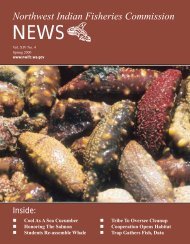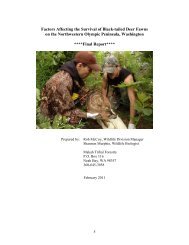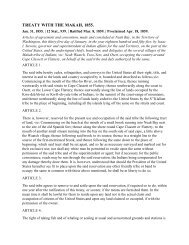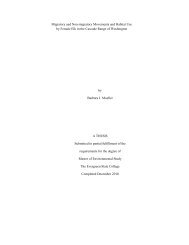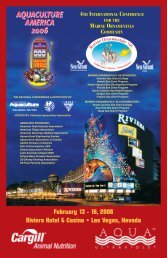Draft TRT Document â for Discussion Purposes ... - NWIFC Access
Draft TRT Document â for Discussion Purposes ... - NWIFC Access
Draft TRT Document â for Discussion Purposes ... - NWIFC Access
Create successful ePaper yourself
Turn your PDF publications into a flip-book with our unique Google optimized e-Paper software.
<strong>Draft</strong> <strong>TRT</strong> <strong>Document</strong> – <strong>for</strong> <strong>Discussion</strong> <strong>Purposes</strong> – OK to circulatemorphology or life history characteristics may also be useful as expressions of underlyinggenetic differences depending on the mechanism of expression. Adaptive life historydifferences between presumptive populations likely reflective ecological differences inthe natal streams and are, in part, indicative of underlying genetic differences. Since thedegree of isolation necessary to maintain genetic independence is much higher than that<strong>for</strong> demographic independence, genetic in<strong>for</strong>mation will tend to give a more conservativemeasure of demographic population structure. That is, populations that are geneticallysignificantly different are almost certainly demographically independent; alternatively,some populations that do not appear to be genetically distinct may still be largelyindependent demographically.Our knowledge of steelhead population genetics in Puget Sound is based on anumber of older allozyme-based studies (e.g. Phelps et al. 1997) and several recent, butmore geographically limited, studies using microsatellite DNA markers (e.g. Kassler etal. 2008). In some cases, interpretation of results from these studies may be limited byuncertainty in estimating the degree of introgression by non-native hatchery fish intopopulations. We do not have genetic data <strong>for</strong> populations prior to the large, widespread,and sustained releases of hatchery stocks. Thus we cannot directly estimate geneticimpacts to population structure from hatchery fish spawning naturally over the timeperiod of interest. Phelps et al. (1997) suggested that there was little evidence <strong>for</strong>hatchery introgression in most basins sampled. Kassler et al. (2008) found evidence ofinterbreeding between native N.F. Skykomish River steelhead and the non-nativesummer-run hatchery stock (Columbia Basin-origin) released in the Skykomish River.Presently, there are a number of steelhead genetics studies underway throughout PugetSound, and we used preliminary results from some of these. Final results from projectsare pending. Although the state of knowledge of Puget Sound steelhead populationgenetics is growing, it is clear that much more work is needed. The <strong>TRT</strong> used geneticdata and results that were available and best met the needs of identifying DIPs andMPGs. As appropriate data become available it will be important to re-evaluatepopulation genetic relationships and DIP designations.GeographyThe boundaries of a steelhead population are influenced, in part, by the spatialconfines of its spawning habitat. Physical features such as a river basin’s topographical,hydrological, and temperature characteristics dictate to a large degree where and whensteelhead can spawn and delimit the spatial area over which a single group of fish can beexpected to interact. For example, because of potential differences in homing fidelity the<strong>TRT</strong> distinguished between streams draining directly to Puget Sound and those that weretributaries to larger river system in the assessment of population independence.Geographic features such as elevation, geology, and precipitation will determine flowdistribution, riverbed characteristics (substrate size, stream width and depth) and waterconditions. Geographic constraints on population boundaries (such as distance betweenstreams) can provide a useful starting point, but geographic constraints will not generallysupport strong inferences at a fine scale (e.g., distinguishing separate populations withintributaries of a sub-basin). In addition, biogeographical characteristics and historical10



